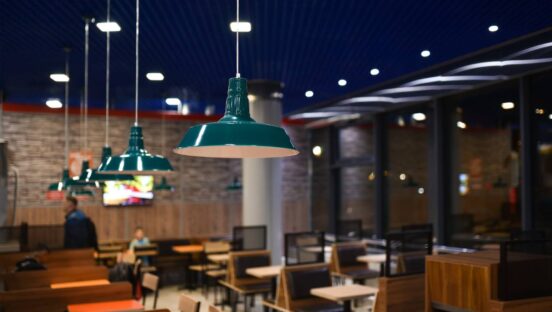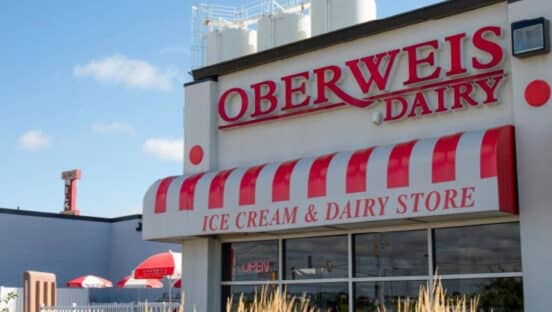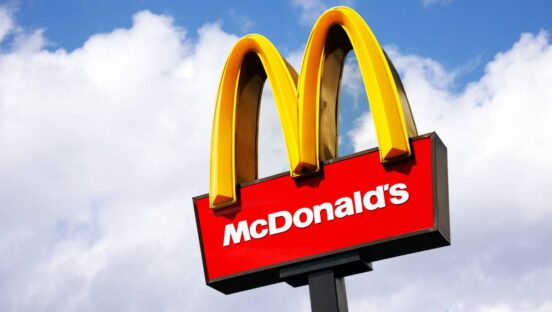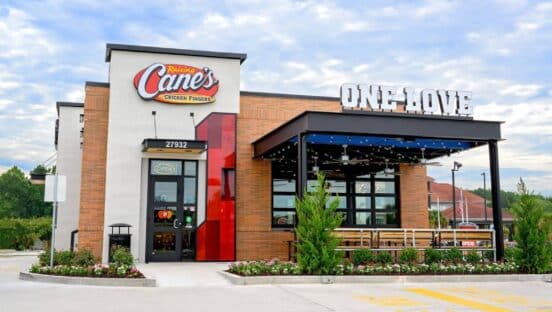There are a lot of statistics about how risky opening a restaurant is. An Ohio State study pinned the figure at 80 percent failing within the first five years. That same study suggested about 60 percent don’t make it to year 2. No matter the specifics, operators don’t need to be told twice this is a challenging realm.
One thing about technology, along with all the new issues it presents, is the fact that, when harnessed correctly, it can give restaurants control over certain pain points that typically bring out the harshest critics. An example: payment technology. Sounds straightforward and pretty much every restaurant has one, but the truth is it can make or break a customer’s dining experience.
TSYS, a global payment provider that generated revenue of $4.9 billion in 2017 while processing more than 27.8 billion transactions, conducted a payments study of more than 1,000 U.S. consumers to take the pulse of this sector.
Some intriguing points surfaced. Top: Millennials are the No. 1 critics of payment technology. So in addition to worrying about whether your restaurant’s message, menu, and mission statement satisfies this critical group, you need to ensure they’re checking out and paying in seamless fashion. If not, that already elastic brand loyalty won’t stand a fighting chance.
Here are some key takeaways from the study:
Customers are still dining out. As competition from to-go, more restaurants, delivery, and C-stores squeeze the restaurant sector from all sides, there’s no evidence to prove America’s affection for dining out is waning to any considerable degree. TSYS’s study showed that 75 percent of respondents say they eat out at least once a week, with nearly half (42 percent) eating out at least three times a week.
But let’s get to the payment part.
For those diners who eat out two-plus times a week or more, this was their preferred payment at the restaurant. It’s important to note this is paying at the table. So you can scratch the pay-ahead through an app or site factor.
- 46 percent prefer to swipe their debt/credit card
- 41 percent prefer to insert their debit/credit chip card
- 10 percent prefer to pay with cash
- 3 percent prefer to pay with their phone
What does this suggest? For starters, the mobile pay-at-the-table functionality (like Apple Pay for instance) remains a somewhat mythical option. You’d expect that to change over time but it hasn’t really proven to have legs just yet. While it might be worth offering as an option to hip consumers or could be something to start mulling over, it might not be worth forking out any serious investment.
Swiping and inserting chips, most likely, are relatively interchangeable. That probably just comes down to whether or not the vendor asks for one or the other.
Lastly, is cash dead? Don’t scoff at 10 percent. Shake Shack found through its kiosk tests earlier in the year that some guests still wanted to pull out the paper. In this margin-tight industry, every customer matters. Those guests who like to pay with cash probably do so often and aren’t too flexible. Or perhaps it’s just a one-time deal and they’re forced to go elsewhere if your brand can’t comply. Now, whether or not this customer segment is worth courting in your restaurant’s opinion is another point altogether. It simply depends on the concept. There are a lot of brands where the vast, vast majority of diners skew younger, and thus, probably haven’t had cash in their wallet since they picked up their allowance in middle school. If that other base isn’t worth catering to in light of the no-cash pros, like hygiene, grabbing data with cards, and cutting down employee theft, among other things, then it’s a cost-and-balance equation in need of further discussion.
Up next: When paying at a restaurant, the most important capabilities offered, according to consumers, are:
- 61 percent say secure payments and processing
- 32 percent say speed of the transaction
- 6 percent say the ability to pay at the table
- 1 percent said mobile accessibility
It’s not overly stunning to see security and speed reigning over this category. The security note is especially important in quick service. Brands like PDQ, Panera Bread, Pizza Hut, Wendy’s, Arby’s, Chipotle, Sonic, and others have faced down breaches in recent months. Beyond this being a disturbing dilemma, it’s a major trust concern. It’s expensive to fix from the inside and to identify, and it’s a bit of a public relations nightmare trying to address. Large brands need to not only be able to solve these hacks when they arise, they also have to identify them and realize it’s happening. The best path is to address the issue head on. Admit what happened. Provide support to customers. And then ensure guests its over and done with, and it’s safe again to eat at your restaurant. About the last thing any restaurant chain needs is for customers to think swiping their card presents a serious risk factor.
RELATED: The Data Hack PR Playbook: What Restaurants Can Do in a Cyberattack
Speed, of course, is the lifeblood of the quick-service industry. With the technology that’s available, most brands are finding the path speedier than ever. The order point is where the winners will make their money. Lose sight of the people part of the order experience at your own peril. That journey to payment is everything.

Where the opportunities lie
That 6 percent pay-at-the table statistic stands out. According to TSYS, American technology is only now catching up to Europe, where pay-at-the-table has been persistent for years. This is probably more of a conversation starter for full-serves than limited-service operators given the order-from-the counter notion. But still, it’s an interesting point. TSYS’s study found that, despite this adoption lag in the U.S., customers are still hungry for modern payment options. The majority of those who are frequent diners (69 percent) would prefer every restaurant to offer a pay-at-the-table option, with 79 percent of those being frequent diners.
And this spans generations as for those who “would prefer to pay this way if offered.”
- Millennials: 72 percent
- Gen X/Y: 69 percent
- Boomers: 66 percent
Let’s talk more about speed and security
As TSYS points out, consumers are fickle. One bad experience can make or break opinions about a restaurant. Per the data, this stretches beyond menu options and ambiance: 32 percent say they would reconsider where they dine based on the payment technology used (or not used). The same percent say a payment incident ruined a previous dining experience.
Some more numbers:
47 percent of millennials claim the speed of transaction is the most important aspect when paying at a restaurant. Just 28 percent of Gen X/Y feel this way. It drops to 20 percent for boomers.
41 percent of frequent diners would not return to a restaurant if their personal information was breached.
The top payment experiences that have ruined a dining experience:
- 58 percent: Slow payment process
- 34 percent: Inefficient processes
- 29 percent: Lack of acceptance of preferred payment method
- 20 percent: Lack of security or fraudulent activity occurred
- 12 percent: All of the above
Henry Helgeson, president of Integrated Solutions, TSYS, chatted with QSR about the findings and importance of payment technologies in today’s restaurant dynamic.
I found the tech at the table note very interesting. How much of an opportunity is there for restaurants to really harness this option? And how can they make sure they get it right?
Our research found that a strong majority of those who are frequent diners—69 percent—said they would prefer every restaurant offer a pay-at-the-table option. Pay-at-the-table has yet to catch on in the U.S., but it has been the standard way to pay at restaurants in Europe for many years. American restaurants may be reluctant to make the switch because they think the investment—from a financial and training standpoint—is higher than it actually has to be.
The most important thing restaurants should consider when evaluating pay-at-the-table technology is whether it will work with their POS system. Restaurants need to look at the advantages of pay-at-the-table technology and ask themselves whether their existing payment system could be holding them back. Customer expectations are changing; they expect a seamless experience. Having your staff running from the table to a register in a back room, and then back to the table, is not efficient or fast.
What are some pitfalls restaurants can fall into when it comes to payment technology?
Often restaurants are too focused on getting technology that works for their needs right now and minimizing cost in the short term instead of looking ahead. That’s understandable because the profit margins for restaurants are razor thin. But this approach can also be more expensive in the long run if a restaurant foregoes opportunities to grow revenue, or if they must invest in an entirely new POS system when they decide to open a second location or launch a food truck. Another mistake that restaurants make is settling for “good enough.” There are plenty of technologies out there that allow restaurants to accept credit and debit cards. But many platforms don’t allow them to accept online orders, identify their best customers or tell them when people are spending the most in their restaurant.
When evaluating a POS system, you want one that is both customizable and scalable. Ask yourself: Does it meet my needs right now—and will it be able to meet my needs in the future as my business matures? What information does it capture about my transactions, and is that information shared back with me so that I can improve my business?
Scalability is especially important. Take TSYS’s Genius payment technology platform, for example. Because Genius is cloud-based, any restaurant using this solution would have been able to begin accepting Apple Pay when their software automatically upgrades. That kind of scalability is incredibly valuable—and cheaper—in the long run.
What are some best practices for restaurants to capitalize on some of the trends the data has revealed, especially in regards to security being more important than even speed?
Sixty-one percent of consumers participating in TSYS’s Restaurant Payments Study said that secure payments and processing was the most important thing when paying at a restaurant. This figure demonstrates how even one major breach could do irreversible damage to a restaurant’s reputation.
The speed of the transaction was the most important payment capability for 32 percent of those surveyed. Although security is a top concern for consumers, with the right payments technology, restaurants don’t have to sacrifice speed for security. You can have both.
There are several best practices that are relatively affordable to implement and can help to reduce the risk of fraud. Here are three that every restaurant should consider: First, make sure that you are accepting EMV payments. This technology does a better job of protecting customer payment data than the traditional magnetic stripe. Second, use payment technology that keeps cardholder data off your POS system—so the liability is shifted to your provider. Third, implement protocols that make it harder to commit fraud. For example, pay-at-the-table technology will reduce the likelihood that staff members will steal card information from a customer.
What are some of the future progressions you see as being critical to this space (i.e., payment technology and restaurants)?
Pay-at-the-table will become more prevalent at U.S. restaurants. The factors driving this conversion will be a combination of security and convenience. As more restaurants realize that they need to be proactive in preventing fraud, they will begin to see the upside of investing in the technology. For example, many restaurants host festivals or tastings to augment their business—especially in the summer. Payment systems that can work both in-house as well as remotely will help to make these types of events easier for the restaurant and customer.
A lot has been written about “big data,” but it’s usually in the context of large companies. A trend that will continue to develop in 2019 is the number of restaurants—including those with just one or two locations—that will begin to realize the value of understanding their customers better. Analyzing their spending patterns through better payments technology is an obvious place to start.













